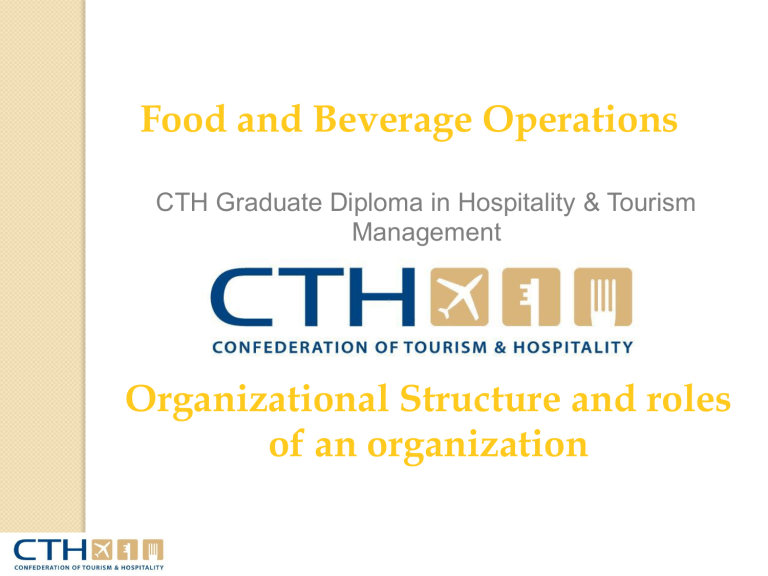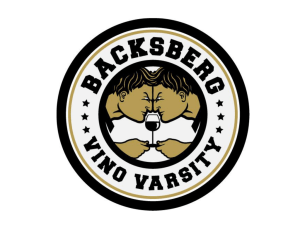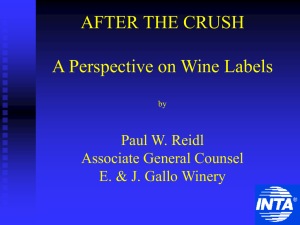Food_and_Beverage_Management_

Food and Beverage Operations
CTH Graduate Diploma in Hospitality & Tourism
Management
Organizational Structure and roles of an organization
Syllabus Learning Outcomes
1.1 Introduction to the organizational structure of the organization
1.2 Identify different roles in food and beverage operations
1.3 Identify different kinds of food operations
1.4 Structuring menu lists and wine lists
Introduction to the organizational structure of the organization
What is an organizational structure ?
Definition
An organizational structure represents a series of activities such as task allocation, coordination and supervision which helps to achieve organization’s goals. Different organizations can be structured and formed in different ways .
Organizational Structures of a
Restaurant
Owner/
Manager
Restaurant manager
Beverage manager
Bartender
Wine steward
Drink
Runners
Sommeliers
Dining room manager
Host ormaiter d'hôtel
Head server
Servers Bussers
Kitchen
Executive chef
Sous chef
Line cooks
Garde
Manager
Saucier Poissinnier Patisserie Entremetier
Identify different roles in food and beverage operations
Roles in the Restaurant
Restaurant manager/ supervisor
Responsibility for the organization and administration of particular food and beverage service areas. These may include the lounges, room service (in hotels), restaurants and possibly some of the private function suites.
Job duties consist of:
◦ managing employees
◦ regulating business operations
◦ resolving customer issues
◦ create work schedules
◦ monitor and evaluate employee performances
◦ motivate staff members
◦ monitoring inventory (ordering/ delivery)
◦ meeting health and safety regulations
Food and beverage manager
The food and beverage manager is responsible for the implementation and setting of the food and beverage policies
In general, food and beverage managers are responsible for:
◦ Ensuring that the required profit margins are achieved
◦ Updating and complete new wine lists
◦ Compiling, in liaison with the kitchen, menu
◦ Purchasing of all materials
◦ Ensuring that quality/quantity in relation to the price paid is maintained
◦ Ensuring staff training in maintaining highest professional standards
◦ Employing and dismissing staff
◦ Holding regular meetings with section heads
◦ Marketing and sale promotion
Dining room manager
Plan dining room set up based on anticipated guest count and client needs
Take the reservations, check the table availability, schedule and maintain reservation
Greet the guests and guide them to the seats
Check on the cleanliness of the employees uniforms
Receive, evaluate and take actions for customer complains
Serves as liaison between the dining room and kitchen staff
Maintain the reservation system
Assist the customers when needed
Bartender
Clean glasses and other utensils
Take orders and serve drinks
Place bottled merchandise and glasses to make a smart display
Waiter/Waitress
Take orders from the customers
Serve food
Present the bill and collect the payments
Check if the customer is enjoying the meal
Roles in the Kitchen
Executive Chef
At the top of the kitchen brigade is Executive Chef or Chef De
Cuisine
His/her duties are:
◦ Responsible for entire kitchen operations
◦ Menu planning
◦ Direct the kitchen staff training
◦ Planning work schedule
◦ Safety and sanitation standards
◦ Design of the menu, dining room and kitchen
◦ Purchasing and costing
Sous Chef
• The second in command is the Sous chef which literally translates as under the executive chef
His/her duties are:
• Directly in charge of production
• Coordinate the preparation of menu items
• Supervising the kitchen
• Accept order and give command (e.g. Aboyeur)
• Controlling position for the whole cooking line
Line cook
Line cooks are the people responsible for making sure that food is prepared to the exact specifications of the chef, establishment, and customer.
Responsible for the quality of food
Maintain sufficient levels of food
Maintain the standard of the dishes (size , taste)
Maintain clean work station areas
Checks on plate presentations such as garnishing
Track and report on food waste
Banquet Manager
Oversee all the events
Check the menus before the event
Main contact person for the customer
Coordinate customer requirements with the
Kitchen department
Inspect the area where the event is happening and check whether all the necessities are right on place
Coordinate breaks for the assigned staff members
Identify different kinds of food operations
Different sectors in food and beverage
tl e ts
O u
Fast Foods Hotels Banqueting
Industrial Outside catering Institutional
In flight
Transport
Catering
Restaurant Public House
Outlets
Outdoor catering
◦ Outdoor catering - Provides food and beverages away from home or a restaurant.
◦ Food is generally prepared elsewhere and served outdoors.
Fast-food
◦ This concept grew from a combination of popular catering and take away.
◦ This includes high amount of marketing.
◦ It has a very high investment on labor.
◦ Provides food and beverages that are prepared quickly.
Banqueting
◦ Provides a large scale of food and beverages along side services.
Industrial Catering
◦ Provides food and beverages for working people. This includes canteens and cafeterias.
Transport catering
◦ Provides food and beverages to people on the move.
Includes Railways, airlines and marine.
Structuring menu lists and wine lists
What is a Menu?
Definition
‘Menu’ consists of food and beverage items available for consumers, designed according to the standards and objectives of the organization .
Menu presents all the available food and beverage items to the customers .
Types of menu presentations
Paper :- Presented to the customers when they visit the restaurant . Mostly widely used form of menu presentation and it is extremely easy to handle for the consumers
Menu Boards/Digital Displays :- Fast food places will use the menu board concepts to showcase their menu fixed in a board high in the wall or on top of the counter for the consumers to have a glance at the menu .
Outdoor :- Restaurants gives a copy of their menu out side the premises
Online Menu :- Provides the menu online . Most of the restaurant who have online menus will provide to order online
.
Main criteria's in the food menu
Attractive presentation
Cleanliness
Easy to read
Content of the menu
Easy to understand
Direct
Lay out and design of Menus
Paper menus will be presented in these layouts
Types of Menus
A la carte menu :- Provides a bigger choice which is established by the organization . Each dish will be priced separately and can order different items from the listing .
Table d’ hote menu(Set menus) :- Contrast to A la carte menus there are fixed number of menus with fixed prices .
The choice is limited .
Static Menu :- Menu is categorized in the groups such as appetizers , salads , soups , deserts etc and easy to identify .
Cyclic Menu :- A specialty item per each day will be introduced in each day . Eg: Fish on Fridays
Sections of the menus
Hors – d‘oeuvres
Potage – (Soup)
Ouefs (Egg)
Farineaux (Rice and Pasta)
Poisson (Fish)
Entrée
Sorbet
Releve
Roti (Roast)
Legumes (vegetables)
Salades (salads)
Buffet Froid (cold buffet)
Entremets (sweet)
Savoureux (savory)
Fromage (cheese)
Dessert (fresh fruit)
Beverages
Types of beverages
Soft drinks
Liquor
Beverages
Cocktails
Wine
Spirits
Beer
Wine
Wine is an alcoholic drink which is made out from fermented grapes.
Sparkling
Wine
De alcoholised and low alcohol wine
Still Wine
Types of wines
Organic
Wines
Fortified
Wine
Aromatized
Wine
Still Wine(Table Wine) :-
The most popular category and this mainly comprises of 3 sections.
◦ Red wine: - Fermented from grapes skins which are red in color.
◦ White wine: - Fermented from white grapes without the skin.
◦ Rosé wine: - Fermented from a variety of red grapes
Fortified Wine :- Contains more than 14 % of alcohol .
◦ Port
◦ Sherry
◦ Madeira
◦ Marsala
◦ Ice wine
◦ Vermouth
Wine Contd.
Aromatized Wine:- Herbs , spices and roots are added along with flavors .
◦ Vermouth
◦ Sangria
◦ Wine coolers
◦ Maiwine
Organic Wine :- Grapes which are used to make organic wine were grown in organic farms
excluding artificial chemicals .
De alcoholised and low alcohol wine :- Contains low percentages of alcohol
Sparkling Wine :- Contains a significant ammount of carbon dioxide and it will result from natural fermentation.
Champaigne
Tips when preparing a good wine list
Menu should be easy to navigate
Prepare the menu according to the target customers
A balanced menu in terms on varieties , tastes and price
Allocate a well trained staff to serve and let the staff involve in selecting a suitable wine for the customers
Matching Food with wine
Dry White wine or dry roes wine starter courses
National wine of the same country
National dishes
Well chilled white wine
Red wine
White wines
Chilled sweet white wine
Dry robust red wines
Fish and other sea food dishes with red meats such as beef and lamb white meat such as veal and pork sweets and desert with fruits cheese





